CALL, MESSAGE OR WHATSAPP ON 077 8069 8989
CALL, MESSAGE OR WHATSAPP ON 077 8069 8989
Mole Removal or Mole Excision in Nottinghamshire, Derbyshire, Bedfordshire and Hertfordshire
- Home
- Procedures
MOLE REMOVAL OR MOLE EXCISION
WHAT IS A MOLE?
Moles are flat or raised blemishes that appear commonly on the face or body, and can vary in size, colour or shape. Moles are also called Naevi if multiple, or Naevus if single. Whilst most moles are innocuous, any variation in colour or shape or moles which cause irritation could be symptoms of a serious underlying problem, and call for an immediate medical examination.
Prominent moles on the face or other parts of the body can be embarrassing for many, and overly large moles can lead to pain, distress and restriction of movement.
WHAT IS MOLE EXCISION SURGERY?
Mole excision surgery is a procedure to remove moles that have changed colour or shape, are unappealing, painful or hamper your movement. It is quick, convenient and is performed on an out- patient basis, meaning that there is no overnight stay at the hospital.
OTHER SKIN CONDITIONS
In addition to moles, other lumps and bumps on the face or other parts of the body can be embarrassing for many and can lead to pain, distress and restriction of movement. The examples of such conditions are lipoma, fibroma,benign soft tissue tumours arising from sweat glands, hair follicles, sebaceous glands or nerve fibres like neurofibromas. Mr Javaid also routinely performs excision of benign soft tissue lumps and bumps in addition to benign skin lesions.
-
Remote 3D Video Consultation
How does it work:
1- Sign-up through this link
2- Upload 3 photos (front, right & left view)
3- Book your Remote 3D Consultation
Stay safe and have a Remote 3D Video Consultation from the comfort and privacy of your home, office or favourite place.
-
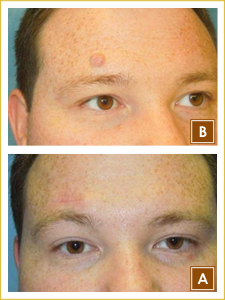
MOLE REMOVAL
Patient 1 - Before and After
-
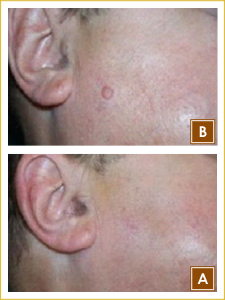
MOLE REMOVAL
Patient 2 - Before and After
-
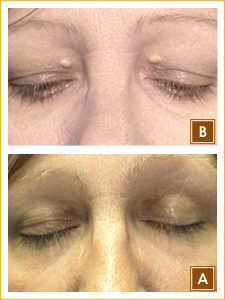
MOLE REMOVAL
Patient 3 - Before and After
-
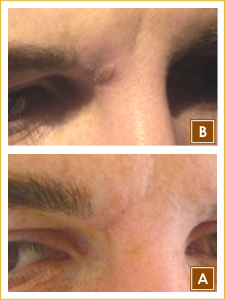
MOLE REMOVAL
Patient 4 - Before and After
-
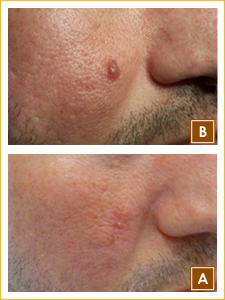
MOLE REMOVAL
Patient 5 - Before and After
-
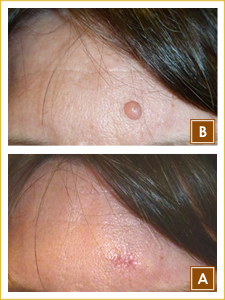
MOLE REMOVAL
Patient 6 - Before and After
-
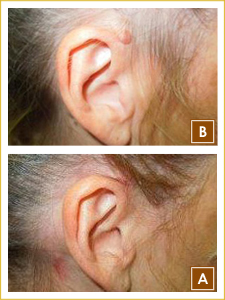
MOLE REMOVAL
Patient 7 - Before and After
-
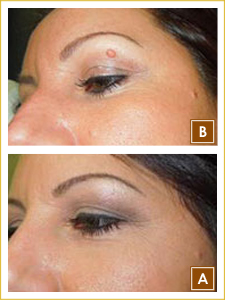
MOLE REMOVAL
Patient 8 - Before and After
-
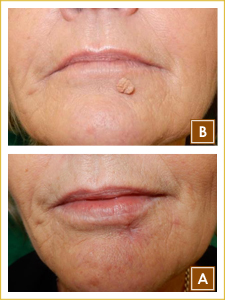
MOLE REMOVAL
Patient 9 - Before and After
-
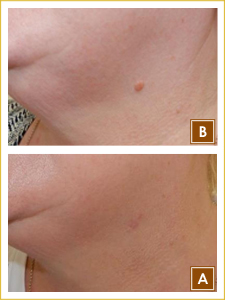
MOLE REMOVAL
Patient 10 - Before and After
-
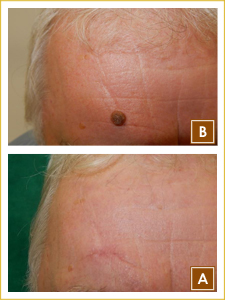
MOLE REMOVAL
Patient 11 - Before and After
-
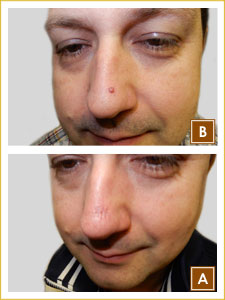
MOLE REMOVAL
Patient 12 - Before and After
-
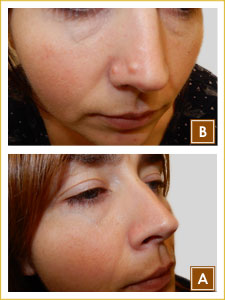
MOLE REMOVAL
Patient 13 - Before and After
-
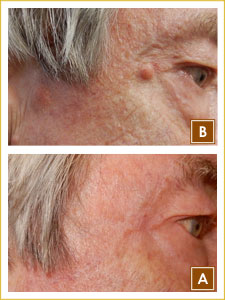
MOLE REMOVAL
Patient 14 - Before and After
-
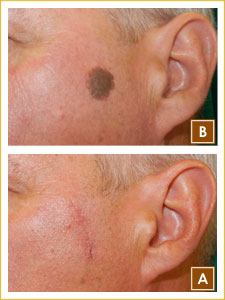
MOLE REMOVAL
Patient 15 - Before and After
-
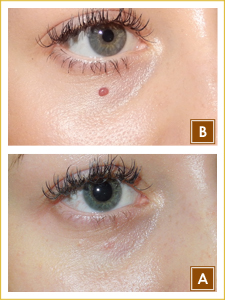
MOLE REMOVAL
Patient 16 - Before and After
-
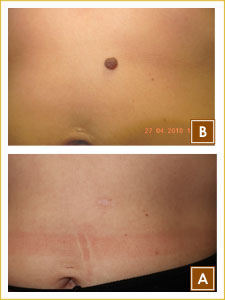
MOLE REMOVAL
Patient 17 - Before and After
-

MOLE REMOVAL
Patient 18 - Before and After
DURING AND AFTER THE OPERATION
Local anaesthetics are generally used for the surgery; although sedative drugs may be administered to help you relax during the process. It usually requires 20 minutes to isolate a single mole, but the duration varies from one patient to another, depending on the procedure followed.
Moles are usually excised with a scalpel and the wound is secured with sutures. Shaving of moles down to the surrounding skin level may also be carried out. Alternatively, cold liquid nitrogen is used to freeze off some moles while high energy laser treatment and diathermy may be utilised under certain circumstances.
There will be visible scarring post-operation, the extent of which depends on the procedure followed by the surgeon. Formation of scabs around the wound is quite normal and commonly takes one or two weeks to settle. You may experience swelling or bruising which heals in a few weeks. Scars may be prominent following the surgery, but fade considerably with time.
POST-SURGERY RECOVERY
Usually, normal activities can be resumed immediately after the surgery. Dressings are applied to the wounds for a few days and you’ll be advised to apply prescribed antibiotic creams until the wound is healed or the sutures are removed. Stitches are removed in one or two weeks and specific post-surgery instructions are given by the physician.
REASONS FOR MOLE REMOVAL
Reasons may either be medical or cosmetic.
Doctors may recommend a biopsy for certain moles (change in colour, size, shape or if it causes pain and irritation) to verify whether it is cancerous or pre-cancerous. If the report suggests evidence of a malignant condition, it requires immediate treatment to prevent or treat skin cancer.
Other people may opt for the operation to enhance their appearance by removing unsightly and uncomfortable moles.
OTHER SKIN CONDITIONS
In addition to moles, other lumps and bumps on the face or other parts of the body can be embarrassing for many and can lead to pain, distress and restriction of movement. The examples of such conditions are lipoma, fibroma,benign soft tissue tumours arising from sweat glands, hair follicles, sebaceous glands or nerve fibres like neurofibromas. Mr Javaid also routinely performs excision of benign soft tissue lumps and bumps in addition to benign skin lesions.
POTENTIAL RISKS AND COMPLICATIONS
Like other cosmetic procedures, mole/lums & bumps removal surgeries may involve some risks, although the chance of such occurrence is negligible. Possible side effects may include bleeding, infection, recurrence, scars related problems and persistent dissatisfaction with the appearance.
Every year, numerous mole removal operations are successfully performed in the UK, rarely with any major complication. However, risks and a suitable treatment plan are explained to the patients before the surgery.
SUMMARY
Operation duration: Usually 20-30 minutes. Anaesthesia: Local. Hospital Stay: Not required. time off work: Not required.
MOLE REMOVAL OR MOLE EXCISION ENQUIRIES
If you require any further information about Mole Removal or Mole Excision, or the range of surgical and non surgical treatments provided by Mr Javaid or wish to book a consultation please contact us by completing our enquiry form or by using the following contact details:
Enquiries in Hertfordshire and Bedfordshire:Please speak to Mrs Pauline Titley (private secretary) on 077 8069 8989
Enquiries in Derbyshire and Nottinghamshire:Please speak to Mrs Pauline Titley (private secretary) on 077 8069 8989
You may also reach us via WhatsApp:Send us a message or call us from your mobile using WhatsApp.Our WhatsApp contact number is the same as the one you currently use to reach our Private Secretary Mrs Pauline Titley on 077 8069 8989.
Instagram Latest Posts
Mole Removal or Mole Excision
Lip Lift
Sebaceous Cyst Removal
Ear Correction, Otoplasty or Pinnaplasty
Scar Revision
-
Remote 3D Video Consultation
How does it work:
1- Sign-up through this link
2- Upload 3 photos (front, right & left view)
3- Book your Remote 3D Consultation
Stay safe and have a Remote 3D Video Consultation from the comfort and privacy of your home, office or favourite place.
-
Mr Muhammad Javaid
-
 Qualifications: MBBS MSc FRCSG FRCS(Plast)Full Member of: BAAPS & BAPRAS
Qualifications: MBBS MSc FRCSG FRCS(Plast)Full Member of: BAAPS & BAPRAS
-






